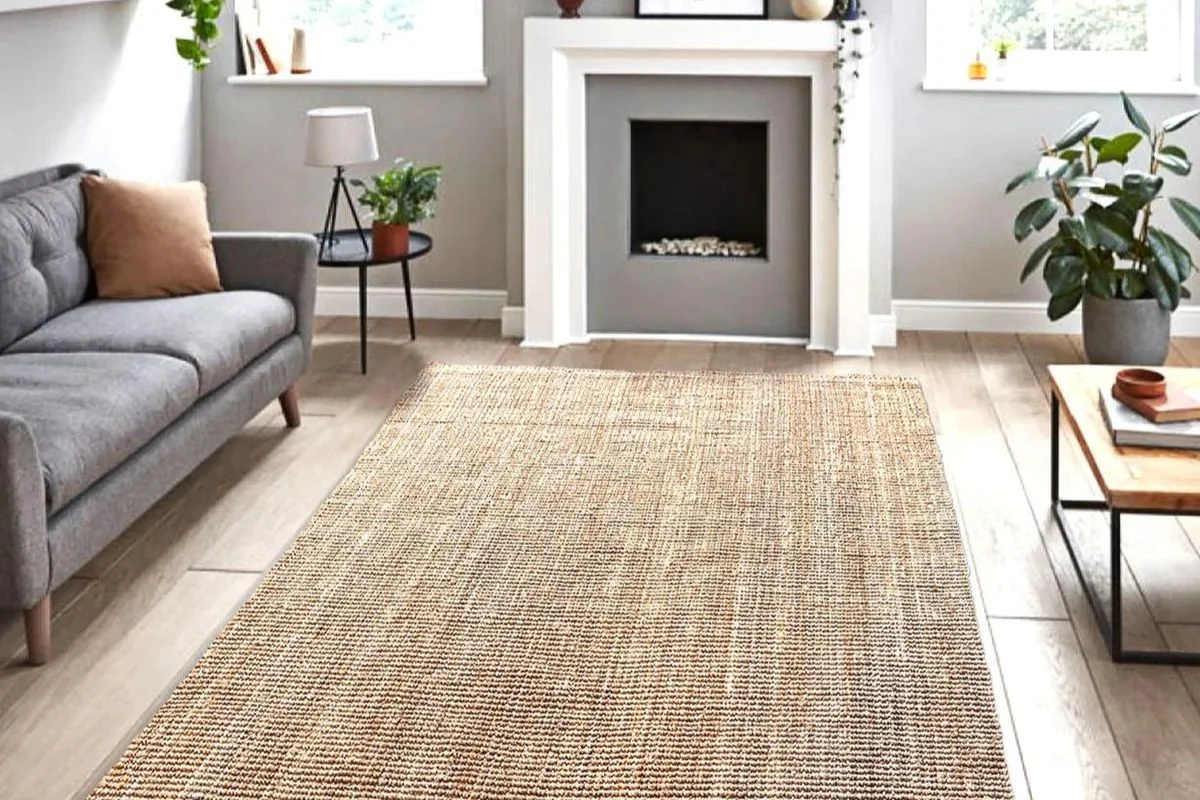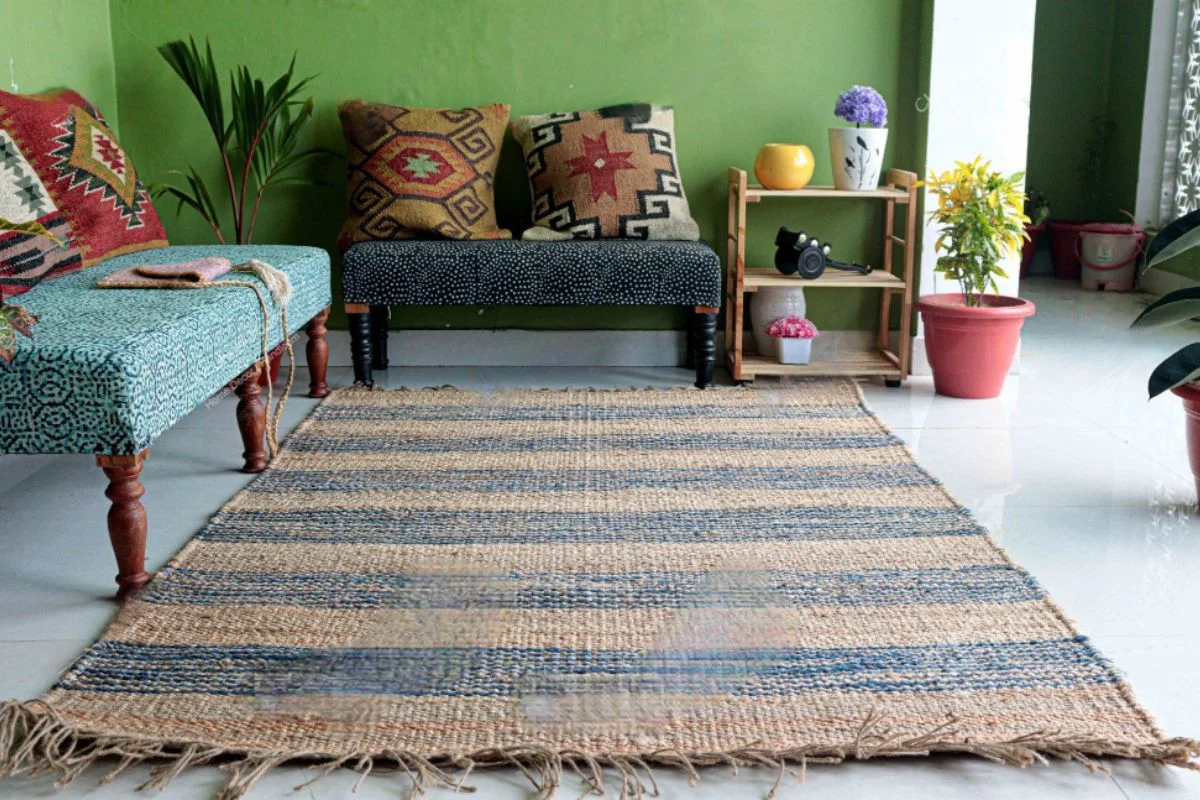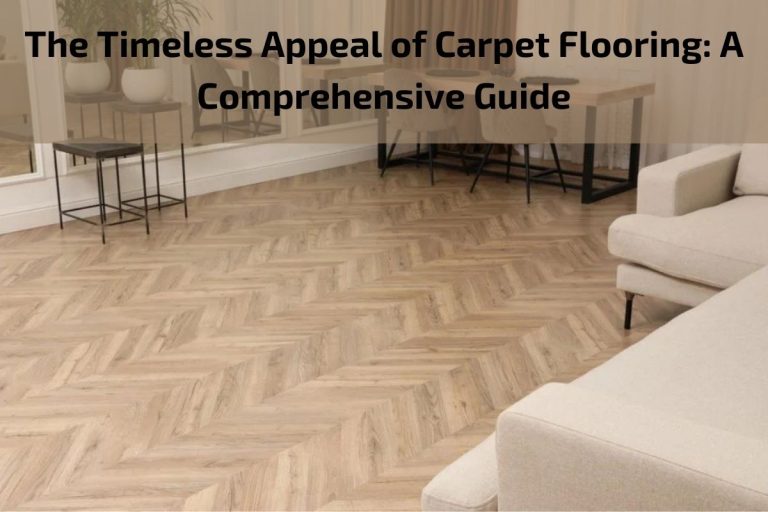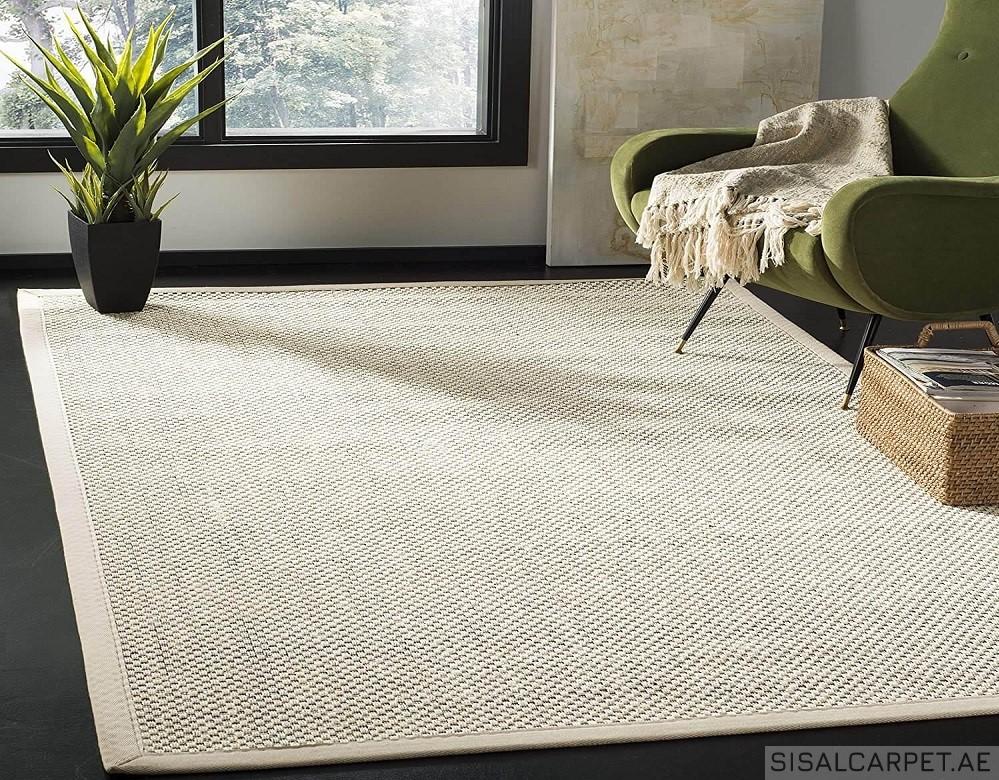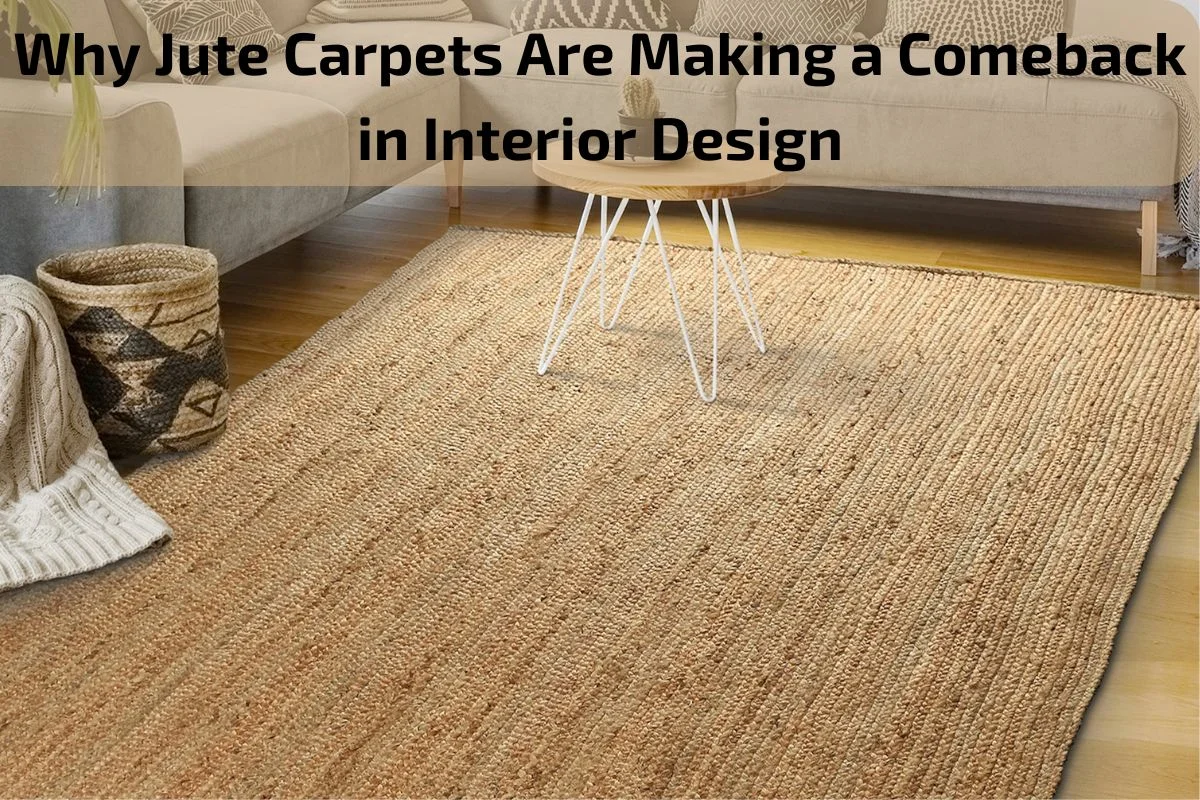
In recent years, the interior design world has witnessed a resurgence of interest in natural materials and sustainable decor options. Among these eco-conscious choices, jute carpets have emerged as a timeless and versatile flooring solution that is making a notable comeback in interior design circles.
Jute, a natural fiber derived from the jute plant, has been used for centuries to create textiles, rugs, and carpets. With its inherent durability, earthy texture, and eco-friendly properties, jute offers a compelling alternative to synthetic and mass-produced flooring materials.
In this article, we’ll explore the reasons behind the renewed popularity of jute carpets in interior design. From their organic appeal and tactile charm to their environmental benefits and design versatility, jute carpets have captured the attention of designers, homeowners, and eco-conscious consumers alike.
Join us as we delve into the captivating world of jute carpets, discovering why they have become a coveted choice for creating warm, inviting, and sustainable living spaces.
Brief Overview of Jute Carpets:
Jute carpets are natural floor coverings crafted from the fibers of the jute plant, a versatile and sustainable crop grown primarily in the Indian subcontinent. These carpets embody the essence of eco-friendliness and rustic charm, making them increasingly popular choices in modern interior design.
Jute, known for its robustness and durability, lends itself well to carpet weaving, offering a unique blend of strength and softness. Jute carpets exude a distinct earthy texture and natural warmth, adding a touch of understated elegance to any room.
Renowned for their biodegradability and environmentally friendly nature, jute carpets stand as symbols of sustainability in the realm of interior decor. They serve as testament to the growing preference for eco-conscious design choices that prioritize both style and environmental responsibility.
In the following sections, we’ll delve deeper into the allure and practicality of jute carpets, exploring their myriad benefits, applications, and considerations for those seeking to incorporate them into their living spaces.
The Rise of Jute Carpets in Interior Design
The emergence of jute carpets as a prominent element in interior design reflects a broader trend towards sustainability, natural materials, and timeless aesthetics. This section explores the factors contributing to the growing popularity of jute carpets within the realm of interior design.
Environmental Consciousness: In an era marked by increasing environmental awareness, consumers are seeking eco-friendly alternatives to conventional home decor materials. Jute carpets, made from natural fibers derived from the jute plant, resonate with individuals committed to reducing their ecological footprint.
Rustic Elegance: Jute carpets exude a distinctive rustic charm that adds character and warmth to any space. Their natural texture and earthy tones complement a wide range of design styles, from contemporary to farmhouse chic, making them versatile choices for both residential and commercial interiors.
Texture and Depth: Jute carpets offer a tactile experience that enhances the sensory appeal of interior spaces. The fibers’ inherent coarseness creates visual interest and depth, adding dimension to floors and enriching the overall design scheme.
Versatility in Design: One of the most appealing aspects of jute carpets is their adaptability to various design aesthetics. Whether used as standalone rugs or layered with other floor coverings, jute carpets effortlessly integrate into diverse decorating styles, from bohemian and coastal to minimalist and eclectic.
Warmth and Comfort: Beyond their visual appeal, jute carpets imbue spaces with a sense of coziness and comfort. Their soft yet resilient texture provides a welcoming surface for bare feet, enhancing the overall ambiance of living areas, bedrooms, and lounges.
Natural Light and Airiness: Jute carpets have the unique ability to reflect natural light and imbue rooms with a sense of airiness and openness. Their neutral hues and light-reflective qualities create a harmonious balance of light and shadow, elevating the atmosphere of any interior setting.
Longevity and Durability: Despite their natural origins, jute carpets boast impressive durability and longevity. When properly maintained, they can withstand daily wear and tear, making them practical choices for high-traffic areas such as living rooms, hallways, and entryways.
Advantages and Disadvantage of Jute Carpets
Jute carpets, like any other flooring option, come with a set of advantages and disadvantages. Understanding these factors can help homeowners and designers make informed decisions when considering jute carpets for their spaces.
Advantages:
Environmentally Friendly: Jute carpets are made from natural fibers derived from the jute plant, making them biodegradable and eco-friendly. They contribute to sustainable living practices by reducing reliance on synthetic materials and minimizing environmental impact.
Natural Aesthetics: Jute carpets exude a rustic charm and organic appeal that adds character to interior spaces. Their earthy texture and neutral tones create a warm and inviting atmosphere, enhancing the visual appeal of any room.
Softness and Comfort: Despite their coarse appearance, jute carpets offer a soft and comfortable surface underfoot. They provide a cozy environment for relaxation and barefoot walking, making them ideal for bedrooms, living rooms, and lounging areas.
Versatility in Design: Jute carpets complement a variety of design styles, from traditional to contemporary. They can be used as standalone rugs or layered with other floor coverings to create visual interest and depth in interior spaces.
Breathability: Jute fibers are naturally breathable, allowing air to circulate through the carpet and prevent moisture buildup. This feature helps maintain a healthy indoor environment by reducing the risk of mold and mildew growth.
Disadvantages:
Susceptibility to Moisture: Jute carpets are prone to damage from moisture and humidity. Excessive exposure to water can cause the fibers to swell, leading to warping, mold, and decay. As a result, jute carpets may not be suitable for areas with high humidity or frequent spills.
Staining and Soiling: Jute carpets are more susceptible to staining and soiling compared to synthetic alternatives. Spills should be promptly cleaned to prevent permanent discoloration and damage to the fibers. Regular maintenance and stain-resistant treatments can help mitigate this issue.
Limited Durability: While jute carpets offer softness and comfort, they may lack the durability and resilience of synthetic carpets. They are more prone to wear and tear, particularly in high-traffic areas, and may require replacement sooner than other flooring options.
Pricing: Jute carpets tend to be more expensive than synthetic alternatives due to their natural origins and manufacturing processes. The higher cost may deter some homeowners from choosing jute carpets as their primary flooring option.
Allergen Sensitivity: Individuals with allergies or sensitivities may react to jute fibers, particularly if they are not properly cleaned and maintained. Dust and debris can accumulate in the carpet, triggering allergic reactions in sensitive individuals.
Maintenance Requirements: Cleaning and Care Tips for Jute Carpets
Proper maintenance is essential to preserve the beauty and longevity of jute carpets. Here are some cleaning and care tips to keep your jute carpets looking their best:
Regular Vacuuming: Use a vacuum cleaner with a brush attachment to remove dust, dirt, and debris from the surface of the jute carpet. Vacuum the carpet at least once a week, focusing on high-traffic areas and areas prone to spills.
Spot Cleaning: Promptly address spills and stains on the jute carpet to prevent them from setting and becoming permanent. Blot the affected area with a clean cloth or paper towel to absorb excess liquid. Avoid rubbing the stain, as this can spread it further. Use a mild detergent diluted in water to gently clean the stain, then blot with a damp cloth to rinse. Allow the area to air dry thoroughly.
Avoid Excessive Moisture: Jute carpets are sensitive to moisture and can be damaged by excessive water exposure. Avoid steam cleaning or wet shampooing jute carpets, as this can cause the fibers to swell and warp. Instead, opt for dry cleaning methods or spot cleaning with minimal moisture.
Rotate Furniture: To prevent uneven wear and indentation marks, regularly rotate furniture placed on top of the jute carpet. This helps distribute the weight evenly and minimizes the risk of permanent damage to the carpet fibers.
Use Rug Pads: Place rug pads underneath the jute carpet to provide additional cushioning and prevent slipping. Rug pads also help protect the underlying flooring surface and extend the lifespan of the jute carpet.
Avoid Direct Sunlight: Prolonged exposure to direct sunlight can cause fading and discoloration of jute carpets. Position furniture and area rugs strategically to shield the carpet from harsh sunlight. Consider using curtains or blinds to regulate sunlight exposure in the room.
Professional Cleaning: Periodically, consider professional cleaning services for deep cleaning and maintenance of your jute carpet. Professional cleaners have the expertise and equipment to effectively remove embedded dirt and stains without damaging the carpet fibers.
Regular Inspection: Routinely inspect the jute carpet for signs of wear, damage, or pest infestations. Address any issues promptly to prevent further deterioration and maintain the overall condition of the carpet.
Conclusion
In conclusion, jute carpets offer a blend of natural beauty, eco-friendliness, and timeless appeal that make them a standout choice in interior design. Throughout this article, we’ve explored the advantages and disadvantages of jute carpets, as well as essential maintenance tips to preserve their quality and longevity.

